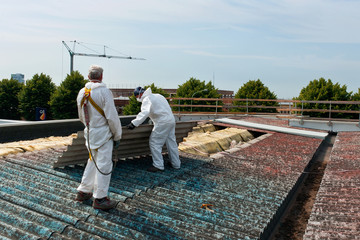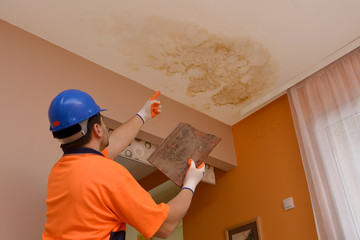Real Estate Agents act as go-betweens for buyers and sellers, conveying offers and counteroffers back and forth. They also know the area’s home prices well and can help buyers create a realistic budget.
Agents market properties through online marketing, billboards, radio and television ads, and open houses. They also connect with potential clients through their sphere of influence and networking events.
One of the main reasons people choose to work with real estate agents is to get help finding a home. Agents can use their resources to find properties that match your price range and other specifications, such as number of bedrooms and bathrooms, size and shape. They also know the local area, which means they can tell you more about a neighborhood, such as crime rates, accessibility to public transportation and whether it’s a good location for families with kids.
When you find homes you’re interested in, your real estate agent will guide you through the entire process of making an offer. This includes advising you on how much to offer, what contingencies to include and explaining the contract terms. Real estate agents can also recommend pros to handle inspections, appraisals and other tasks related to the transaction.
As part of the negotiation process, your agent will provide data on comparable properties and housing market trends to help you come up with a fair offer for the property. They can also make recommendations for last-minute improvements to boost your chances of selling the property quickly. When it comes to the actual closing, your agent can manage certain aspects of the sale, including submitting and filing paperwork, handling deposits and delivering keys.
In addition to guiding you through the home buying and selling process, your real estate agent can help you find mortgage lenders and negotiate loan terms. They can also advise you on what types of insurance to purchase, which may be required as part of the closing agreement.
You can also ask potential agents about their experience and education, as well as what credentials they have earned. For example, some agents have special designations or certifications, such as being a certified residential specialist or having experience working with particular types of buyers or sellers, such as seniors or military personnel. You can also ask for references from previous clients so you can talk to them about their experiences with the agent. Choosing an experienced agent can help you avoid delays and mistakes that could cost you money.
They Help You Get Preapproved for a Loan
Real estate agents are licensed professionals who help their clients buy and sell property. They’re familiar with the local market, and they can perform tasks like analyzing home prices and market data to determine a fair selling price. They can also assist with the mortgage process by helping their clients choose a lender and get preapproved for a loan. They’re typically compensated through commissions, which are a percentage of the sales price of the property.
Agents who represent buyers search for properties that meet their client’s needs and price range by looking at listing information online and in the MLS database. They may also use past sales data on comparable homes in the area to help buyers come up with a fair offer. After finding a suitable home, they may schedule viewings and negotiate on the buyer’s behalf. They may also manage particular legal actions like preparing, submitting and filing paperwork for closing.
When evaluating a real estate agent, ask for testimonials or references from previous clients. This can give you a good idea of their experience and whether they’re right for you. A real estate agent who refuses to provide you with references may be hiding something or not being honest.
Depending on the state, real estate agents can specialize in residential or commercial properties. They may work with both home buyers and sellers, but they usually focus on one type of property. Commercial real estate agents have additional skills and knowledge, such as understanding local markets, how to evaluate investment opportunities and how to handle commercial leases.
Regardless of the type of property they sell, real estate agents can provide valuable insight and expertise based on years of experience. They can make the process of buying or selling a home smooth and stress-free, and they can help their clients find a home that meets their individual needs and budget. If you’re ready to start your search for the perfect home, reach out to a real estate agent today! Visit Rocket HomesSM to connect with an experienced agent near you.
They Help You Negotiate
Real estate agents are well versed in the art of negotiation. They can help you negotiate the best price for your home if you’re selling, or they can help you get the home of your dreams for less than you thought possible if you’re buying. They also know which negotiating tactics to avoid. For example, they’ll tell you to never belittle the seller or their property – it just makes them angry and more determined to hold out for a better deal.
Another thing they can do is provide you with backup if the process doesn’t go exactly as planned. They can give you a list of other homes or sellers that may be interested in the home, and they can also help schedule things like home appraisals and inspections. These are all tasks that you would otherwise have to take care of on your own if you’re not working with a real estate agent.
They can also help you assemble and file the necessary legal documents to complete the sale. And they can assist you with finding a mortgage lender that’s reputable and trustworthy. In addition, they can help you understand the tax implications of different types of loans and mortgages.
One of the most important tasks a real estate agent can do is make sure you’re preapproved for your mortgage before you start shopping for homes. This will show homeowners and their agents that you’re a serious buyer. If you’re not, they might pass you over for someone else who is.
In short, real estate agents can save you time and money in the long run by taking care of many of the details involved in a home sale or purchase. They can help you find a good mortgage lender, get a home inspection or appraisal done and even assist with the closing process. To learn more, contact a Rocket Homes(sm) Verified Partner Agent today!
They Help You Close
When it comes to buying or selling a home, most people wind up working with real estate agents at some point. These licensed professionals organize property sales between buyers and sellers, and they help assemble legal documents and communicate with all parties involved in the process. In addition, they can provide expert insight on local housing markets and market trends. Depending on their role in the transaction, real estate agents can also assist with finding homes or prospective buyers, helping them get preapproved for a mortgage and walking them through closing.
When working with clients, a real estate agent will often try to close the sale as quickly as possible. This is because they understand that every single deal is important for their careers and business. To close a client, they’ll usually make sure that they understand their needs and wants, create a clear timeline and deadline for completing the transaction and provide references from previous clients to demonstrate their experience and expertise.
If they’re representing a seller, a real estate agent will help them determine a fair asking price for their property by pulling comps and providing data on local housing markets. They’ll then list the property on MLS and other databases, host open houses, post for sale signs and do whatever else they can to get their client’s home in front of as many potential buyers as possible.
In the case of buyers, a real estate agent will help them find properties that meet their specific criteria, such as access to public transportation or being in a good school district. They’ll also help them schedule viewings and advise them on making an offer. They’ll also assist with getting home appraisals and inspections and will usually have connections with reputable professionals in the industry who can perform those services.
Once the buyer has found a property they’re interested in, their real estate agent will work with their lender to get them preapproved for a loan and advise them on the best way to make an offer. They’ll also work with the home seller’s agent to help negotiate and guide them through the closing process.




 The cost of asbestos removal varies depending on the type and condition of the material. It can also depend on the location of your home. The most common types of asbestos in homes are floor tiles, roofing, and siding. However, other materials that contain asbestos include boiler lagging, pipe insulation, and attic insulation. These materials were once commonly used in construction and may still be present in many homes.
The cost of asbestos removal varies depending on the type and condition of the material. It can also depend on the location of your home. The most common types of asbestos in homes are floor tiles, roofing, and siding. However, other materials that contain asbestos include boiler lagging, pipe insulation, and attic insulation. These materials were once commonly used in construction and may still be present in many homes.






 The first step in gutter cleaning is to make sure the gutters are clear of leaves and other debris. If there is standing water, pests will be attracted to it and may even make their way into your home. Keeping your gutters clean will also prevent rodents from getting into your house. In addition, you’ll be preventing mold and mildew from forming.
The first step in gutter cleaning is to make sure the gutters are clear of leaves and other debris. If there is standing water, pests will be attracted to it and may even make their way into your home. Keeping your gutters clean will also prevent rodents from getting into your house. In addition, you’ll be preventing mold and mildew from forming. 
 Even small leaks can cause serious damage. Water spreads quickly, soaking into walls, floors, soft furnishings, wooden doors, and window frames. It can also impact electrical systems. When water is allowed to stay too long, mold can grow and lead to health issues. If you don’t deal with water damage immediately, you may not even realize you have a problem until it’s too late. The best way to avoid mold is to have a water damage restoration company come out as quickly as possible.
Even small leaks can cause serious damage. Water spreads quickly, soaking into walls, floors, soft furnishings, wooden doors, and window frames. It can also impact electrical systems. When water is allowed to stay too long, mold can grow and lead to health issues. If you don’t deal with water damage immediately, you may not even realize you have a problem until it’s too late. The best way to avoid mold is to have a water damage restoration company come out as quickly as possible.